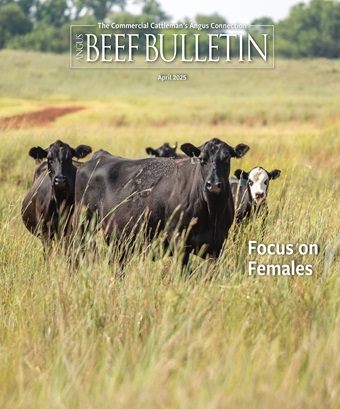Market Closeout
Maximizing profits.
February 5, 2025

If you were to ask most cow-calf producers what the key drivers to positioning their operation for success in the future are, they would respond with taking care of the land, creating a cow herd with the genetics to work in their environment and meet consumer demands, and taking care of the people who live and work on the operation.
All three of these factors are of course dependent upon profitability. Profits enable us to maintain and improve our resources and key producing assets and enable us to provide a standard of living and lifestyle that those working on the operation deserve. I would probably also argue that identifying one’s “why,” or purpose, should be part of that equation, as well as identifying a business model and market targets that allow them to differentiate their product and leverage the value they have created.
Focus on the cow
All of these are vitally important, but for the sake of this article we are going to focus on the cow herd. It, after all, is our biggest distinguishing factor as an operation, and our largest point of differentiation. The cow herd not only contributes 50% of the genetic makeup of the calf crop, but it really and truly is the factory. The cow herd is the building block of everything we are trying to accomplish as producers. As trite as it sounds, you are not in the cattle business without cows.
With value differences between pens of cattle routinely exceeding $600, a low-cost, highly fertile cow herd is not the guarantee of success it once was.
The old formula for building a cow herd served us pretty well. Understand the level of mature size and milk production your environment can sustain. Once those thresholds are established, work to select for higher levels of fertility, keeping in mind the “necessity” traits like mothering ability, udder quality, feet and leg structure, and disposition. The economists would tell us this would allow us to optimize the economics of our operation, finding the optimum combination of production costs and weaned calf percentage.
A new weighting
In a commodity pricing system with little or no price differentiation, this was a solid economic model. However, the value of the terminal traits — postweaning gain, feed efficiency, marbling, carcass weight and yield have grown in significance. Cow-calf producers must not only create a cow herd that fits the environment, but a calf that meets the demands of the sectors up the supply chain and, ultimately, the consumer. With value differences between pens of cattle routinely exceeding $600, a low-cost, highly fertile cow herd is not the guarantee of success it once was.
The exciting news is cow-calf producers have nearly doubled their opportunity to increase margins. The troubling part is the difficulty level of hitting these targets has also increased. Thankfully, we have better tools than we have ever had to make the right genetic decisions.
Tools to help
Genomically enhanced expected progeny differences (EPDs) and new EPDs like functional longevity, foot EPDs, and teat and udder scores enable us to manage the numerous genetic antagonisms that exist. A producer truly can select cattle with appropriate levels of mature size and milk production, while simultaneously improving growth and composition of our end product. Sire selection, heifer selection and culling regimens are the typical tactics employed to reach these goals, but all three are requiring more information so one can make informed decisions.
GeneMax® AdvantageTM gives producers the capability to make better selection decisions. The Maternal Score with AngusLink’s Genetic Merit ScorecardSM gives buyers a better understanding of what they are buying and sellers an avenue to further differentiate their product through documented and verified information.
Sire selection has become more accurate because of genomically enhanced EPDs, but we are now tasked with finding the optimum combination of 22+ plus traits, all of which potentially have a significant influence on the bottom line. Some traits we are striving to optimize, while others we are attempting to maximize. Still others fit under the category of threshold traits. Add in the fact we have wide variety in production environments, costs and marketing objectives, and the simple task of selecting next year’s bulls becomes somewhat daunting.
A producer truly can select cattle with appropriate levels of mature size and milk production, while simultaneously improving growth and composition of our end product.
That is why so many people are relying on selection indexes to help them move toward their breeding objectives and to make decisions that keep them out of the ditches. The science of selection has never been better. Yet, ironically, as the science has improved, the art of breeding a great cow herd has also increased, as breeding objectives have become more narrowly defined. Visual appraisal will always be a vital component of selection decisions; however, in today’s world, with increased demands and economic values, it is sorely inadequate if one wants to make truly informed decisions.
The Angus cow is the standard, and thanks to a lot of committed breeders and the largest database for genetic evaluation in the world, the gap is widening. But, saying you are going to run an Angus bull on an Angus-based cow herd is probably not sufficient if you are truly committed to positioning your herd for the future.
Editor’s note: Troy Marshall is director of commercial industry relations for the American Angus Association.
Angus Beef Bulletin EXTRA, Vol. 17, No. 2-A



